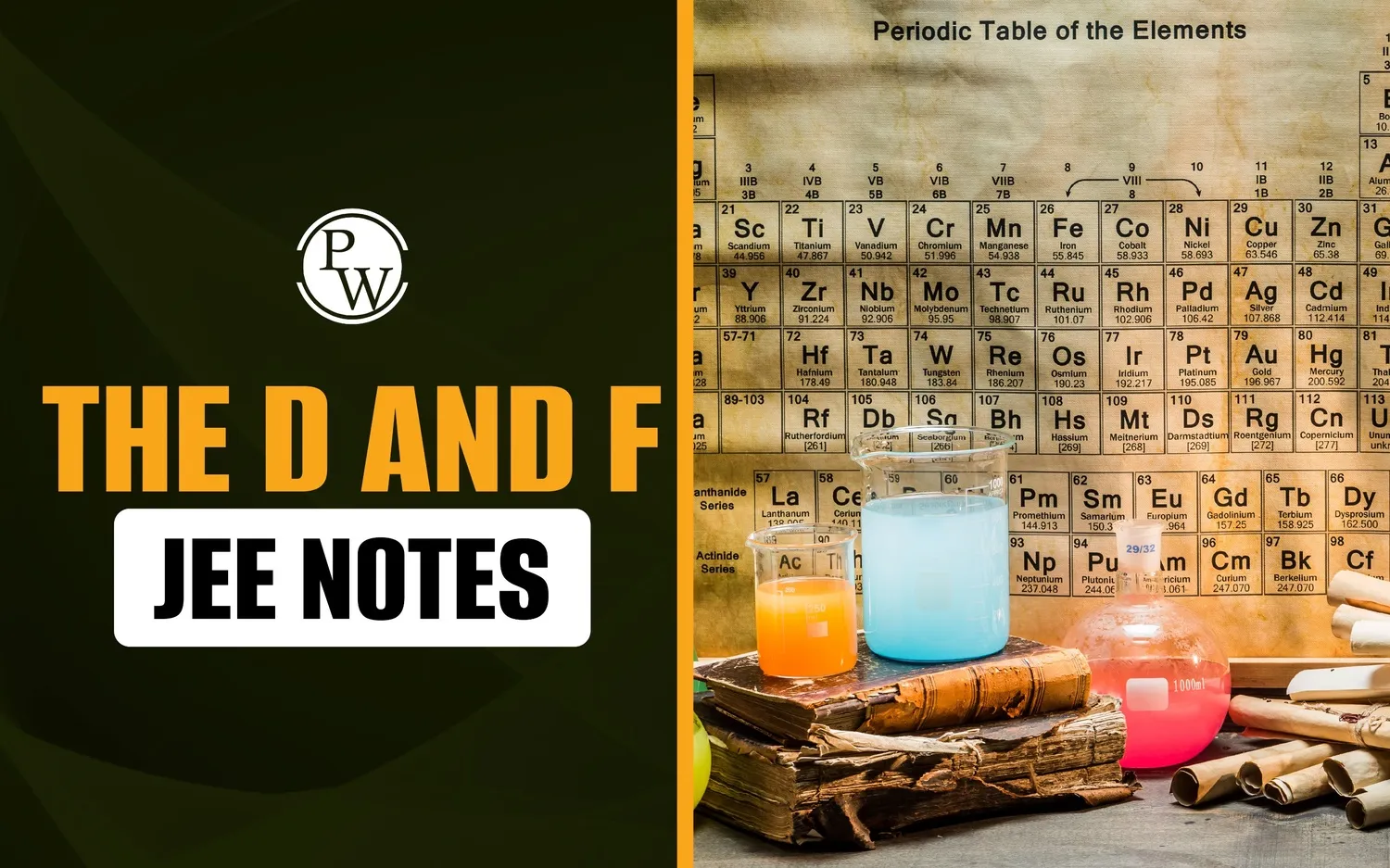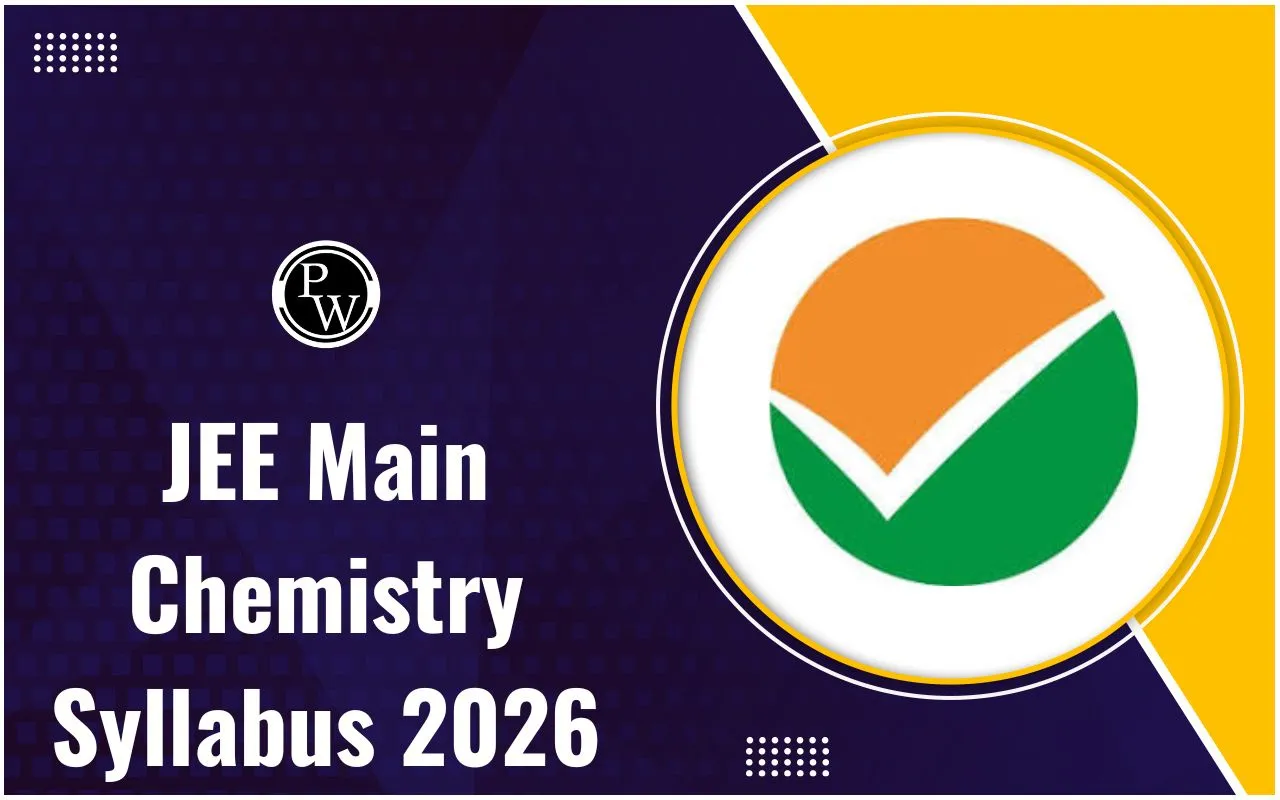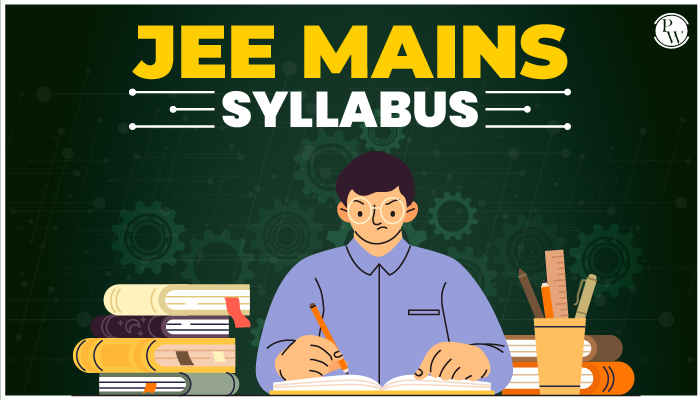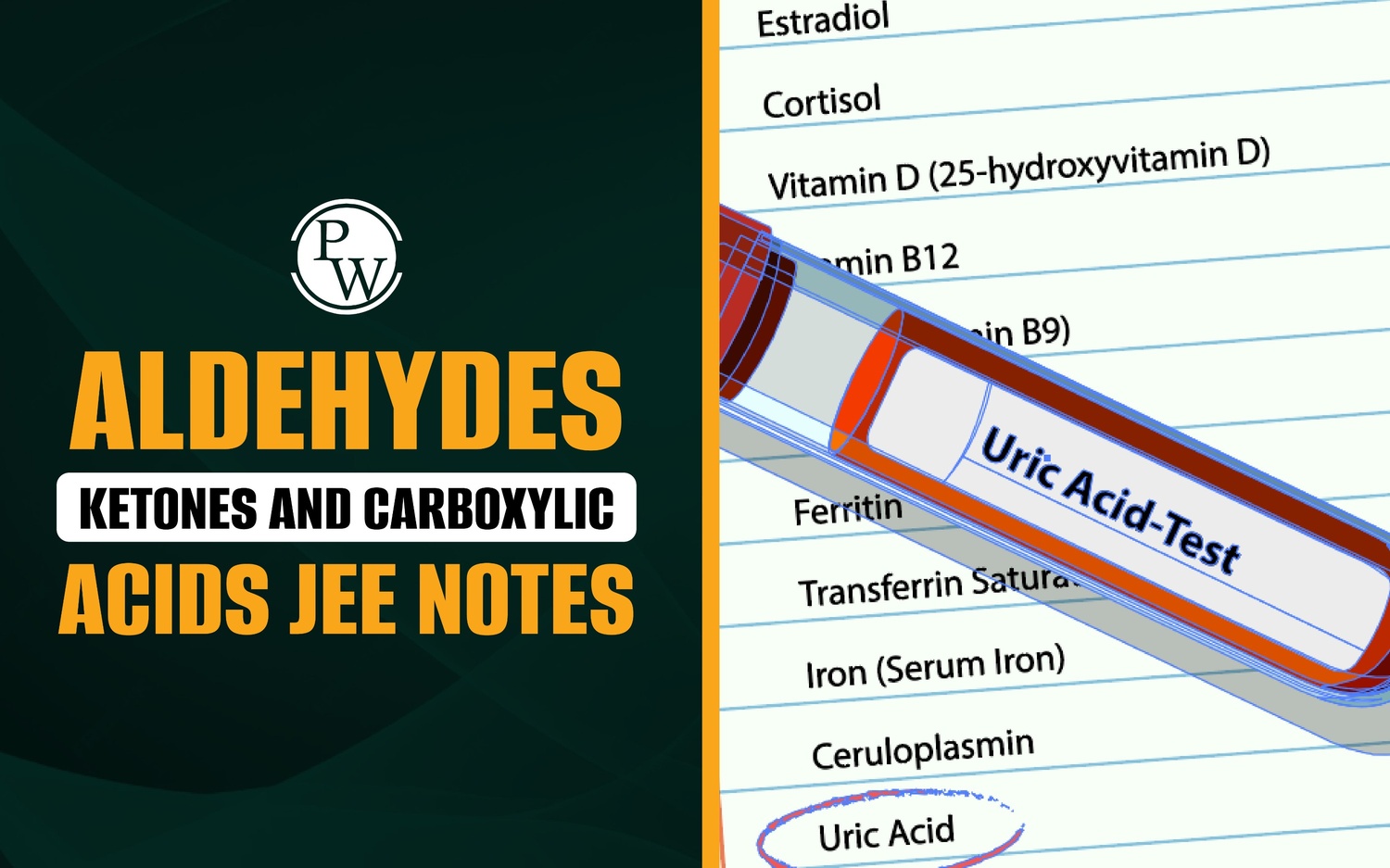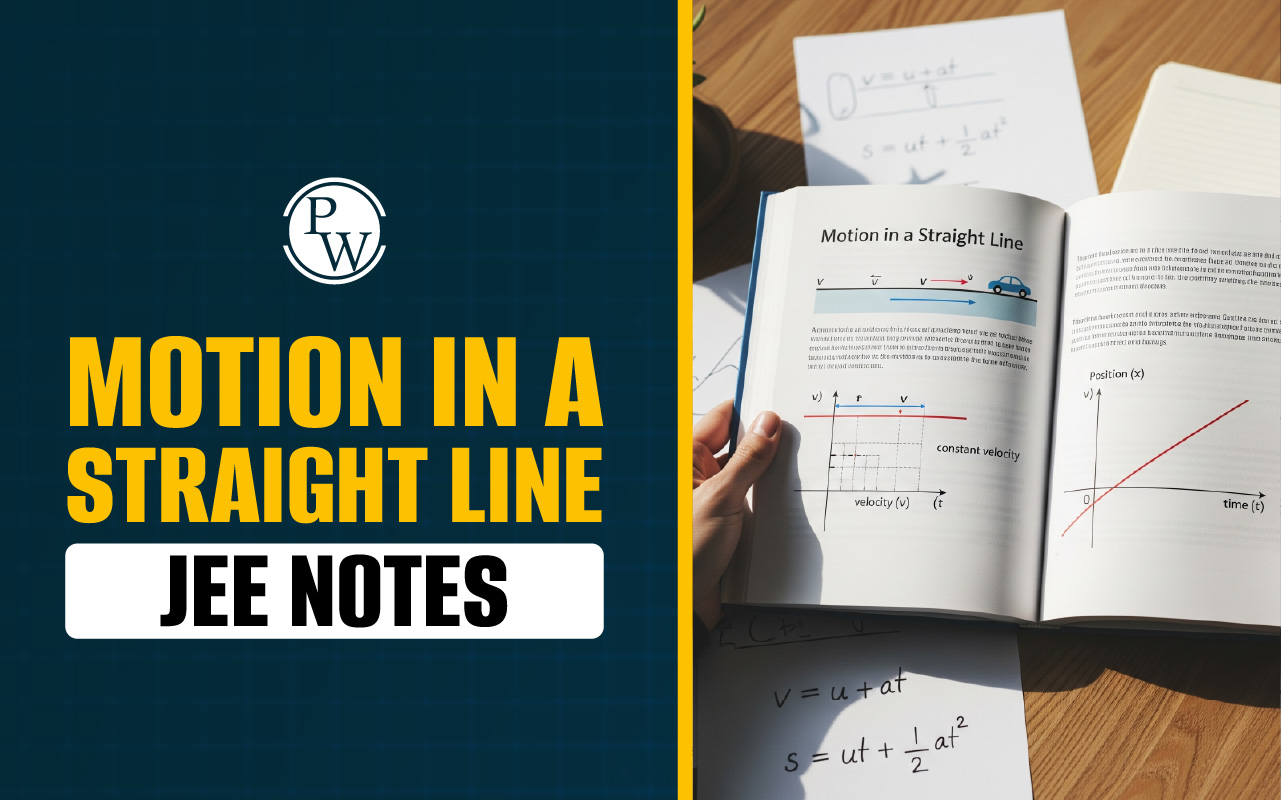
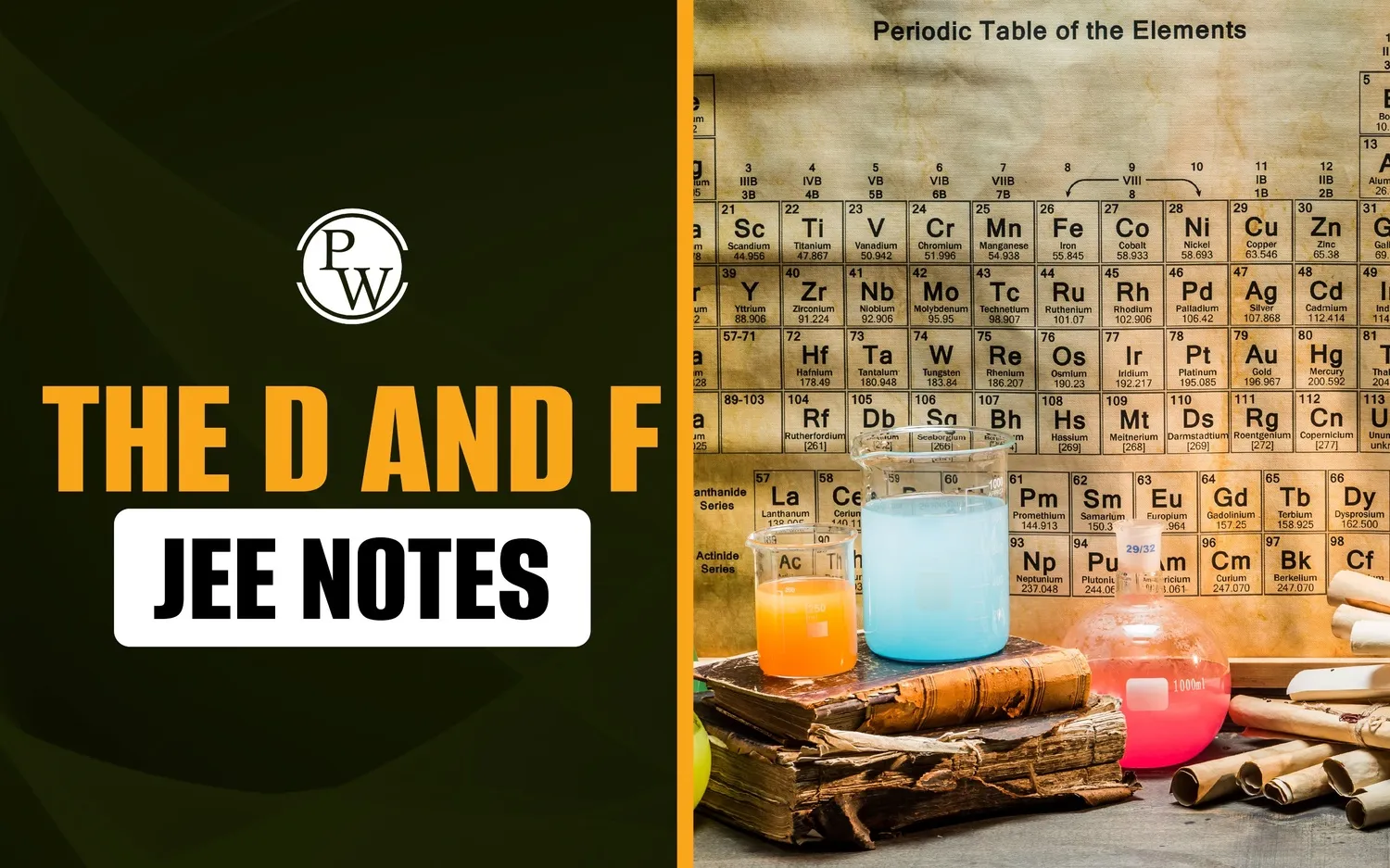
The d and f Block Elements JEE Notes: Basically, these are often called transition and inner transition elements, respectively. These elements include metals that form the central part of the periodic table (Groups 3–12). They show variable oxidation states, form colored compounds, and often act as catalysts due to partially filled d or f orbitals. These notes help students to know properly about the d and f block elements.
The d-block contains transition metals like Fe, Cu, and Zn, while the f-block contains lanthanides and actinides, which show complex ion formation and magnetic properties. These elements play an important role in industrial, biological, and electronic applications due to their unique chemical and physical properties.
The d and f Block Elements JEE Notes PDF
Below, we have provided the d and f Block Elements JEE Notes PDF to help students prepare effectively for their JEE exams. This PDF covers important topics such as electronic configuration, oxidation states, magnetic properties, complex formation, and uses of transition and inner transition elements.
It is made to simplify key concepts, highlight important reactions, and provide clear explanations to the students. Download the PDF below to strengthen your understanding and revise this chapter quickly before your JEE exam:
d and f Block Elements JEE Notes PDF
The d and f Block Elements Important Questions JEE
Check below for the d and f Block Elements Important Questions for JEE. These questions are carefully selected from key topics like variable oxidation states, magnetic properties, complex formation, and lanthanoid contraction.
Solving them will help you strengthen your conceptual understanding and improve your accuracy in JEE Chemistry exams.
1. What are transition elements? Give examples.
Transition elements are d-block elements that have partially filled (n−1)d orbitals either in their ground state or oxidation states.
Examples: Fe, Cu, Cr.
2. Why are Zn, Cd, and Hg not considered transition elements?
They have filled d-orbitals (d¹⁰ configuration) in both ground and ionic states and hence do not show variable oxidation states.
3. What is the general electronic configuration of d-block elements?
The general configuration is (n−1)d¹–¹⁰ ns⁰–².
4. Why do 4d and 5d series elements have similar atomic radii?
Due to lanthanide contraction, the poor shielding of 4f electrons causes 5d elements to have atomic radii almost equal to 4d elements.
5. Which element has the smallest atomic radius in the 3d series?
Nickel (Ni) has the smallest atomic radius among the 3d transition elements.
6. How does the melting point vary across the 3d series?
The melting point increases up to chromium (due to the maximum unpaired electrons) and then decreases gradually.
7. Why do transition elements exhibit variable oxidation states?
Because of the small energy difference between (n−1)d and ns orbitals, allowing electrons from both to participate in bonding.
8. Which element in the 3d series shows the maximum number of oxidation states?
Manganese (Mn) shows oxidation states from +2 to +7, the maximum in the 3d series.
9. Which ions of transition elements are colorless and why?
Ions like Sc³⁺, Ti⁴⁺, and Zn²⁺ are colorless because they lack unpaired d-electrons, preventing d–d electronic transitions.
10. What is the magnetic moment formula for transition elements?
Magnetic moment (μ) = √[n(n+2)] BM,
where n = number of unpaired electrons.
11. Why do transition metals form colored compounds?
Due to d–d transitions, where unpaired d-electrons absorb visible light and get excited between split d-orbitals.
12. What are interstitial compounds? Give examples.
When small non-metals like H, B, N, or C occupy interstitial spaces in metal lattices.
Examples: TiC, Fe₃H, Mn₄N.
13. Why are transition metals good catalysts?
Because they have variable oxidation states and can form intermediate complexes while adsorbing reactants on their surface.
14. What is the oxidation state of chromium in Cr₂O₇²⁻?
Each Cr atom has an oxidation state of +6 in dichromate ion.
15. What are lanthanoids and actinoids?
-
Lanthanoids: 14 elements following Lanthanum with progressive filling of 4f orbitals.
-
Actinoids: 14 elements following Actinium with progressive filling of 5f orbitals.
Common oxidation state = +3.
Benefits of Using the d and f Block Elements JEE Notes
The d and f Block Elements JEE notes are made to simplify complex concepts, enhance quick revision, and improve retention. They cover all important reactions, properties, and trends, making them an essential resource for mastering this topic efficiently before the JEE exam:
-
Detailed JEE Coverage: The d and f Block Elements JEE notes include all important topics such as electronic configuration, oxidation states, magnetic properties, colors, and coordination compounds, ensuring complete syllabus coverage of the students so that he/she can score good marks in the exam..
-
Concept Clarity of every point: Each concept is explained in simple, structured language with examples, making it easy to understand even complex topics like lanthanide contraction or variable valency. These notes focus on concept clarity rather than just the learning part.
-
JEE Exam-Oriented Notes for better Preparation: The d and f Block Elements JEE notes focus on the most frequently asked JEE questions, d and f Block Elements solved examples JEE saving time and helping you revise efficiently before the exam. For any exam, it is important to prepare as per the requirements of the exam.
-
Quick Revision Notes: Summarized tables, reactions, and d and f Block Elements formulas. JEE allows you to revise key points quickly during the last days before JEE.
-
Better JEE Problem-Solving Skills: The included JEE solved examples and important reactions help you apply theoretical knowledge to numerical and conceptual questions effectively. Also, along with this, students are advised to leave their doubts and ask for help from their parents or teachers, or they can also ask in their friend circle.
-
Boosts Understanding Power of the Child: Visual aids like color-coded sections, concise bullet points, and an organized format improve memory retention for better recall in exams. Also, it is believed that taking help from these things or using these things in studies develops interest, and that is why one can learn things quickly.
-
Time-Saving and Can Easily Access: With the downloadable PDF format, you can easily access and revise anywhere, anytime - ideal for last-minute preparation.
d and f Block Elements JEE Notes FAQs
What are the d and f Block Elements JEE notes for quick revision?
How can I memorize the d and f Block Elements formulas for JEE?
Are the d and f Block Elements important for JEE exams?
Where can I find solved examples for the d and f Block Elements JEE?

